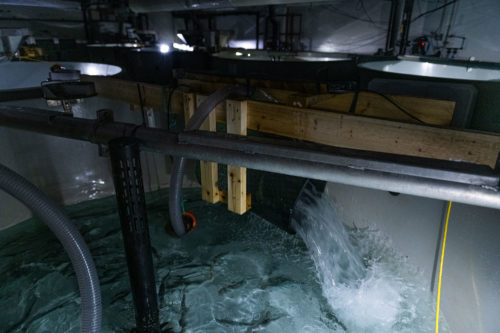There has been little research about how salmon cope in rough conditions – an important building block in the knowledge required to advance offshore farming.
A recent study from the Norwegian Institute of Marine Research, conducted by researcher Malthe Hvas has indicated that salmon raised in wave-exposed aquaculture settings do not suffer long-term adverse effects on appetite, welfare, behavior, or stress levels.
The research, driven by the growing interest in offshore aquaculture, explored the impact of wave-induced turbulence on salmon.
According to Hvas, “Waves create turbulence, making water movement more dynamic and erratic.” This environment, he speculated, might affect fish welfare. To study this, researchers built a custom “wave machine” to control the turbulence experienced by the fish.

“The turbulence in the water affects how the fish move. The question is whether it also affects welfare,” said Hvas.
To find this out, the researchers had to control both the fish and how much turbulence they were exposed to.
During the eight-week study, fish were subjected to simulated wave conditions daily, except for a calm period each day when they were fed. Despite initial reductions in appetite where wave-exposed fish ate 17% less, appetite levels normalized after about two weeks. By the end of the study, although there was a slight difference in growth, fish in turbulent conditions adjusted well, with potential long-term effects likely minimal.
Behaviorally, wave-exposed fish initially exhibited chaotic group dynamics and increased collisions, potentially leading to injuries. However, no significant welfare or stress differences were found between the control and experimental groups, and fish behavior became more organized over time.
Additionally, the study debunked the theory that swimming in turbulent conditions improves fish fitness. A “swim competition” showed no enhancement in swimming abilities, indicating that the fish were not physically weakened by the conditions.
“We simply checked the condition of the fish at the end of the experiment using a “swimming competition” between the fish that had been in troubled water and the control fish,” said Hvas.
The condition of fish is measured using “critical swimming speed”. The researchers then measure how long the fish manages to stay in place in increasing water flow before it starts to lose control.
“If the waves had served as training, the fish should become better at swimming. they weren’t,” he said.

